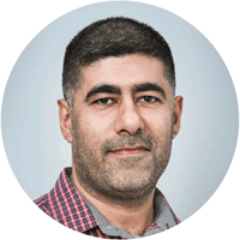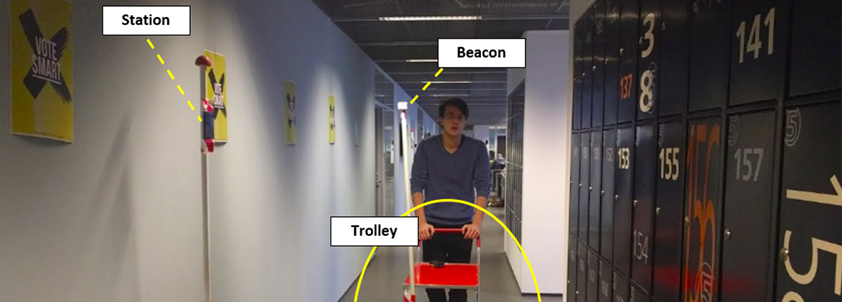Discussion
When this project started, the idea was simple. The goal was to localize objects inside a building environment in an easy and affordable way.
This idea turned out to be a wide research area, and lead to try different approaches as explained in this chapter.
We think adding walking steps, compass and gyros sensor to predict moving direction would help creating extra virtual position. This would add extra position for our calculation process. We did few experiment in this direction but decided to leave this for future development.
In addition, concepts like fingerprinting and dead reckoning will add value to the system, both should be considered for future improvement.
We have at some point considered machine learning for clustering prediction. We think this can be an interesting area of research, for its own.
In our experiment the user hold the smartphone in his hand, but how about collecting data while having the smartphone in a pocket, at leg level or on a table etc. This could be interesting to clarify, as it is our ultimate goal to predict objects while having our smartphones in a pocket.
We thought about adding extra smartphones in a fixed position that collects data permanently to improve stability of results.
Another interesting aspect could be to try the same approach with less iBeacons and try it with directional iBeacons to cover specific regions. We have tried to work with eight iBeacons, but we observed that our software fails to return results. An- other approach is to try with only four iBeacons at each corner of the room and predict region position estimation instead of x and y position. We have at the end chosen to focus on our existing setup with 14 iBeacons and decided to leave this for further research.
Power consumption is important to bring up, this means a lot for end-users. We do not want to let our app drain battery from a user’s smartphone. Therefore, it is ideally to collect data periodically. For instance, we collect data once only when a user or the smartphone is stable and not in a movement. We recollect data again when a user or the smartphone change position status. First of all that would reduce noise, improve accuracy and improve battery operation time.
We thought in the long term, that if our app should cover big buildings, we could easily combining iBeacon data and Wi-Fi data to cover most of the building without necessarily deploying iBeacon all over the building.
It is true that our algorithm is tested, works and deliver the results we present here in this report, but we would like to mention that, it has a place for further improvement. We will mention some of the improvements, that we observed with our algorithm. While we developed the algorithm we did not think of efficiency and running time. This might be possible to improve. The sorting process of iBeacons strongest signal does not guarantee that the strongest signal is the nearest iBeacon. This has therefore reduced the overall accuracy results. This is left for future improvement.
An interesting test would be with the use of real evaluation with real end-users in a real environment out of the IT-University. Especially the input from the end-users and the business owners would be a valuable information to have.
It is our ultimate goal to use the smartphone as a crowdsensing device, but nevertheless, this will rise a new question about privacy issues. For example: will end-users accept using their smartphones to collect his/her position in which we would be able to use it for localizing trackable objects? Is there a mechanism to use crowdsensing for prediction object location without keeping the data from a smartphone? These questions need to be studied and clarified.

